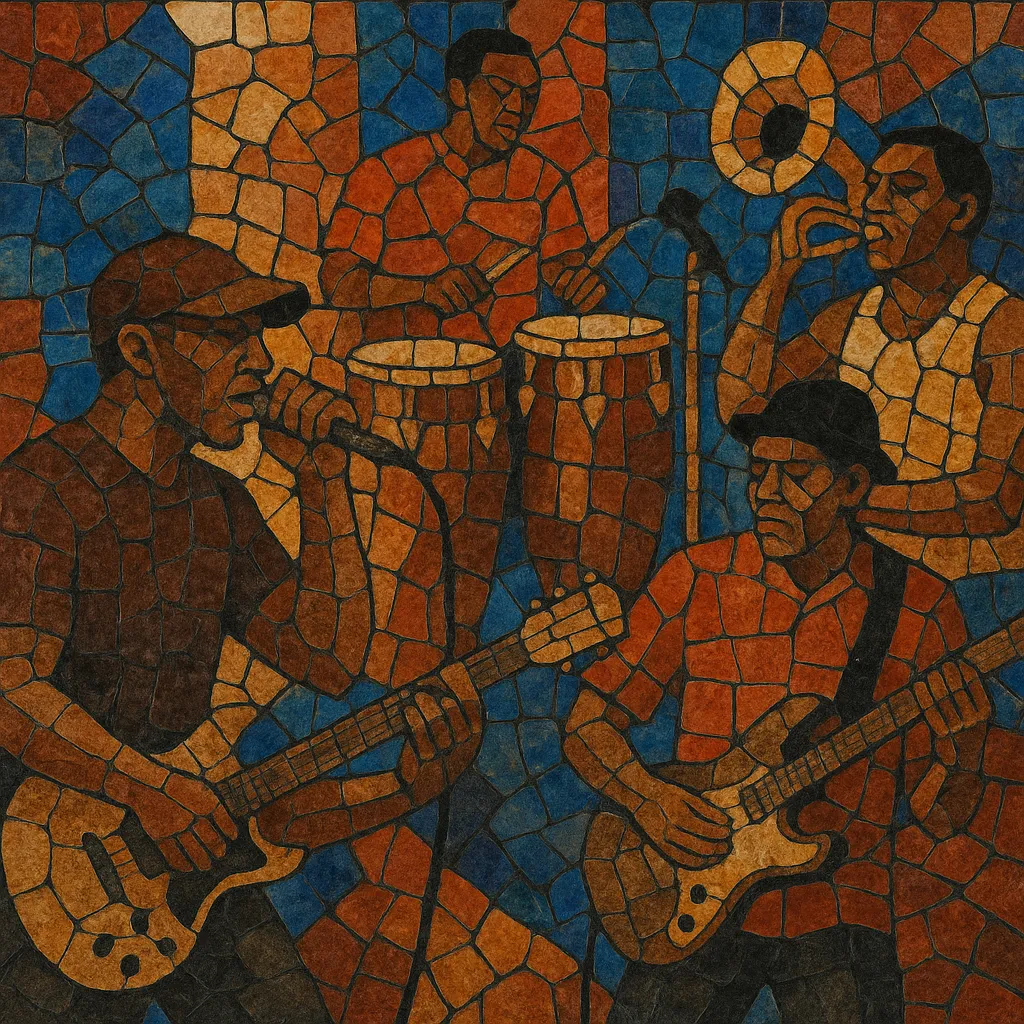Go-go is a percussive, funk-rooted dance music that emerged in Washington, D.C. during the mid-to-late 1970s. It is built on relentlessly steady, medium-tempo grooves that keep dancers moving between songs through live, improvised segues.
The style is defined by multiple percussionists (congas, timbales, cowbells, rototoms), deep "in-the-pocket" drum set patterns, vamping basslines, chanking rhythm guitar, keyboards, and punchy horns. A signature feature is the "talker" or lead MC who drives call-and-response with the crowd, transforming performances into communal parties.
Harmonically, go-go favors extended vamps over one or two chords, prioritizing groove and audience interaction over rapid chord changes. Its rhythms draw from funk, R&B, and Afro‑Latin traditions, resulting in an earthy, syncopated swing that is both hypnotic and highly danceable.
Go-go coalesced in Washington, D.C. club circuits in the mid-1970s as bandleaders sought a way to keep dancers on the floor without breaks. Chuck Brown (often called the “Godfather of Go-Go”) and his band The Soul Searchers pioneered a continuous-performance approach: instead of stopping between songs, the band vamped on grooves while a talker led chants and crowd participation. Musically, this drew on James Brown–era funk, R&B, and Afro‑Latin percussion (congas, timbales, cowbells), creating a hard-swinging, syncopated pocket.
Go-go became D.C.’s defining sound in the early to mid-1980s. Chuck Brown’s “Bustin’ Loose” (1978) crossed over nationally, and bands like Trouble Funk, Rare Essence, E.U. (Experience Unlimited), and Junkyard Band became regional powerhouses. The scene thrived through energetic live shows and a unique "PA tape" economy—circulating live recordings that built fan bases neighborhood by neighborhood. Although mainstream chart success was sporadic, moments like E.U.’s "Da Butt" (1988) showcased go-go’s nationwide appeal.
In the 1990s, go-go remained a dominant local culture even as national trends shifted to hip hop and R&B. The late 1990s and 2000s saw the emergence of bounce-beat go-go (slightly slower BPM, heavier kick syncopation, and triplet feels) through bands like TCB, expanding the style’s palette for younger audiences. Meanwhile, D.C.-born producers (e.g., Rich Harrison) infused mainstream R&B and pop hits with go-go‑inspired percussion (e.g., Amerie’s “1 Thing”), spreading its rhythmic language beyond the region.
Go-go’s identity as a living, participatory culture led to activism to preserve it amid gentrification pressures. In 2019, the #DontMuteDC movement rallied to protect the right to play go-go publicly, culminating in the District of Columbia designating go-go as the city’s official music in 2020. Today, legacy acts and new bands continue the tradition through marathon live sets, neighborhood festivals, and collaborations that bring the go-go pocket to new audiences.


